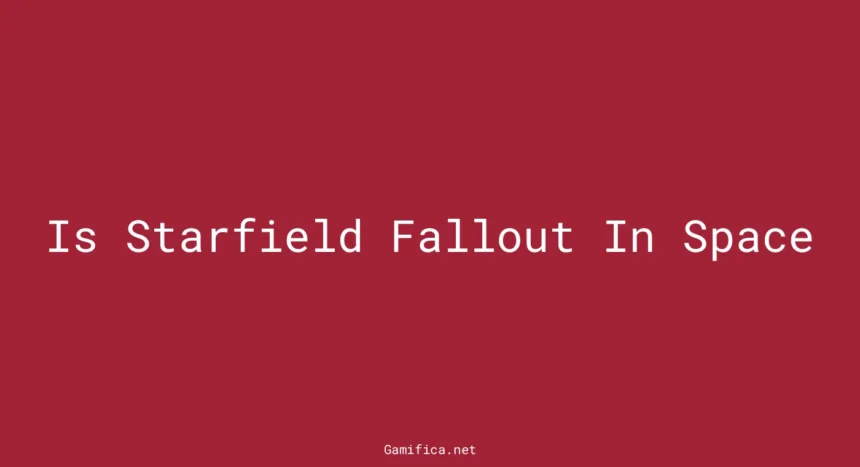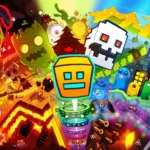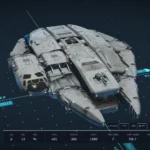Is Starfield Fallout In Space? Prepare to embark on a cosmic adventure like no other as we delve into the captivating world of Starfield. This highly anticipated game has sparked a frenzy among gamers and sci-fi enthusiasts alike, leaving many wondering if it is indeed Fallout in space. Buckle up, because we’re about to explore the similarities, differences, and mind-blowing features that make Starfield a universe of its own. Get ready to blast off into a space odyssey that will leave you questioning the boundaries of reality.
Understanding Starfield: A Unique Universe
Since the moment Bethesda Game Studios unveiled Starfield, the waves of excitement have surged through the gaming community like a cosmic storm. The anticipation is palpable, akin to the thrill of charting a course to unknown galaxies. Starfield, Bethesda’s pioneering intellectual property in over a quarter-century, has sparked a constellation of questions, with one eclipsing others: Is Starfield essentially Fallout in the vast expanse of space?
Starfield Vs Fallout: The Connection
It’s tempting to weave ties between Starfield and Fallout, especially considering they share similar DNA in base building mechanics and combat design. However, these titles spin their narratives in universes light-years apart. Bethesda, during the crucible of development, toyed with the idea of anchoring Starfield in the Fallout cosmos. Yet, this notion was jettisoned into the void, allowing Starfield to establish its stellar, distinct universe.
Starfield: The Space Odyssey
The analogy of Starfield as “Fallout 4 in space” has been floated around, not least by its own director, Todd Howard. This tagline, while evocative, merely skims the surface of Starfield’s ambitious venture. It’s an odyssey that transcends the familiar, be it the scorched earth of Fallout’s wastelands or the mystical realm of Skyrim. Starfield charts a course for unexplored territory, promising an RPG experience where the stars, not the ruins, are the limit.
| Fact | Detail |
|---|---|
| Starfield’s Genesis | Bethesda’s first new IP in 25 years, exploring an original sci-fi universe. |
| Fallout in Space? | Starfield shares some gameplay elements with Fallout but is set in a separate universe. |
| Development Considerations | Bethesda considered placing Starfield within the Fallout universe but decided against it. |
| Director’s Description | Todd Howard has described the game as akin to “Fallout 4 in space”. |
Starfield’s leap into the cosmic unknown is a tapestry of innovation and homage. It nods to the legacy of Bethesda’s storied franchises while painting a canvas of interstellar discovery. The game’s profound ambition is to craft a universe where gamers can carve their own path among the stars, free from the shadows of nuclear dystopias or dragon-swept skies.
As players anticipate the chance to pilot through the vacuum of space, they can rest assured that Starfield’s universe is not just a rehashed Fallout narrative with a starship veneer. It is, instead, a bold new world—a testament to the creative spirit of Bethesda, unfettered by the gravity of its past successes.
Grav Drive Technology: A Game Changer
At the heart of Starfield‘s narrative is the revolutionary grav drive technology, a pivotal innovation that propelled humanity into a new era of interstellar exploration. By manipulating gravitational forces, this advanced propulsion system made the once-impossible dream of faster-than-light travel an astonishing reality. The grav drive’s conception marks a watershed moment, akin to the invention of the wheel or the first flight, and it’s this technological marvel that sets the stage for the game’s epic space odyssey.
Yet, the grav drive’s breakthrough was a double-edged sword. In its wake, Earth’s magnetosphere suffered irreparable damage, leading to a catastrophic collapse. This unforeseen disaster threatened the very existence of life on our home planet, igniting a race against time to find refuge among the stars.
The Aftermath of the Magnetosphere Collapse
With Earth’s natural shield against cosmic radiation compromised, the world’s nations were forced into a precarious alliance. The objective was clear: orchestrate a mass evacuation of unprecedented scale. This exigent migration galvanized humanity’s collective spirit and resourcefulness, as the remnants of our species sought salvation in the vast, uncharted expanses of the universe. The mass exodus that ensued is a backdrop rife with drama and desperation, providing a rich, emotional foundation for the narrative of Starfield.
Starfield and Fallout: The Parallels
The thematic echoes between Starfield and Fallout resonate beyond their shared RPG DNA. Both titles are masterclasses in world-building, granting players the autonomy to carve their paths through expansive, richly detailed environments. The base-building feature, which garnered acclaim in Fallout 4, has evolved into a cornerstone of the Starfield experience. Here, players can establish and customize their own interstellar outposts, creating personal sanctuaries or bustling hubs in the cold depths of space.
Combat Design: A Shared Legacy
When it comes to engaging the enemy, Starfield inherits Bethesda’s signature approach to combat. Seamlessly merging real-time action with layers of strategy, the game encourages players to think tactically in the heat of battle. The combat design may have its roots in the familiar soil of the Fallout series, but it has been refined to suit the new setting, ensuring that each skirmish is as thrilling as it is cerebral.
As adventurers traverse the cosmos, they will encounter a variety of challenges, and just like in Fallout, the freedom to approach these challenges in multiple ways is central to the game’s philosophy. Whether it’s through diplomatic negotiation, stealthy subterfuge, or the decisive use of firepower, Starfield remains true to Bethesda’s commitment to player agency and rich storytelling.
Conclusion
The inquiry into whether Starfield is the celestial counterpart of Fallout is a nuanced one. On the surface, the parallels are evident: both titles immerse players in vast, open worlds brimming with possibilities and peril. But to label Starfield merely as Fallout in space would be to overlook the unique narrative and gameplay experiences it offers within the cosmoscape of modern gaming.
Indeed, Starfield draws upon the rich legacy of Bethesda’s Fallout series, with its intricate role-playing systems and freedom to forge one’s destiny among the stars. Yet, it also charts its own course, infusing the space exploration genre with innovative grav drive technology and a compelling story of humanity’s urgent exodus from Earth.
As explorers of this virtual universe, players will encounter not just remnants of familiar gameplay mechanics but also new frontiers that challenge the conventions of traditional role-playing games. The universe of Starfield extends beyond mere homage—it’s a testament to Bethesda’s evolution, showcasing their ability to propel genre-defining elements into uncharted territories.
In conclusion, while it’s tempting to view Starfield through the lens of its terrestrial predecessor, such a comparison only skims the surface of its stellar aspirations. Bethesda Game Studios has indeed ventured into the final frontier with Starfield, crafting a game that resonates with the echoes of Fallout’s legacy, yet thrives on its own groundbreaking ambitions. And as we stand on the precipice of this new adventure, it’s clear that the journey ahead is as boundless as the universe itself.
FAQ
Q: Is Starfield in space Fallout 4?
A: No, Starfield is not Fallout 4 set in space. While Starfield is a science-fiction RPG that shares similarities with Fallout 4, it has its own unique storyline and gameplay mechanics.
Q: Does Starfield take place in the Fallout universe?
A: No, Starfield does not take place in the Fallout universe. Although Bethesda considered setting Starfield in the Fallout universe during development, the two games are not connected.
Q: How would you describe Starfield’s gameplay?
A: Starfield’s gameplay can be described as similar to Fallout 4, but set in a science-fiction space setting. It offers a more ambitious direction and features unique elements that differentiate it from the Fallout series.
Q: Is Starfield a science-fiction RPG?
A: Yes, Starfield is a science-fiction RPG. It shares similarities with Bethesda’s previous games, including Fallout 4, but offers a new and distinct experience set in a space-themed universe.







